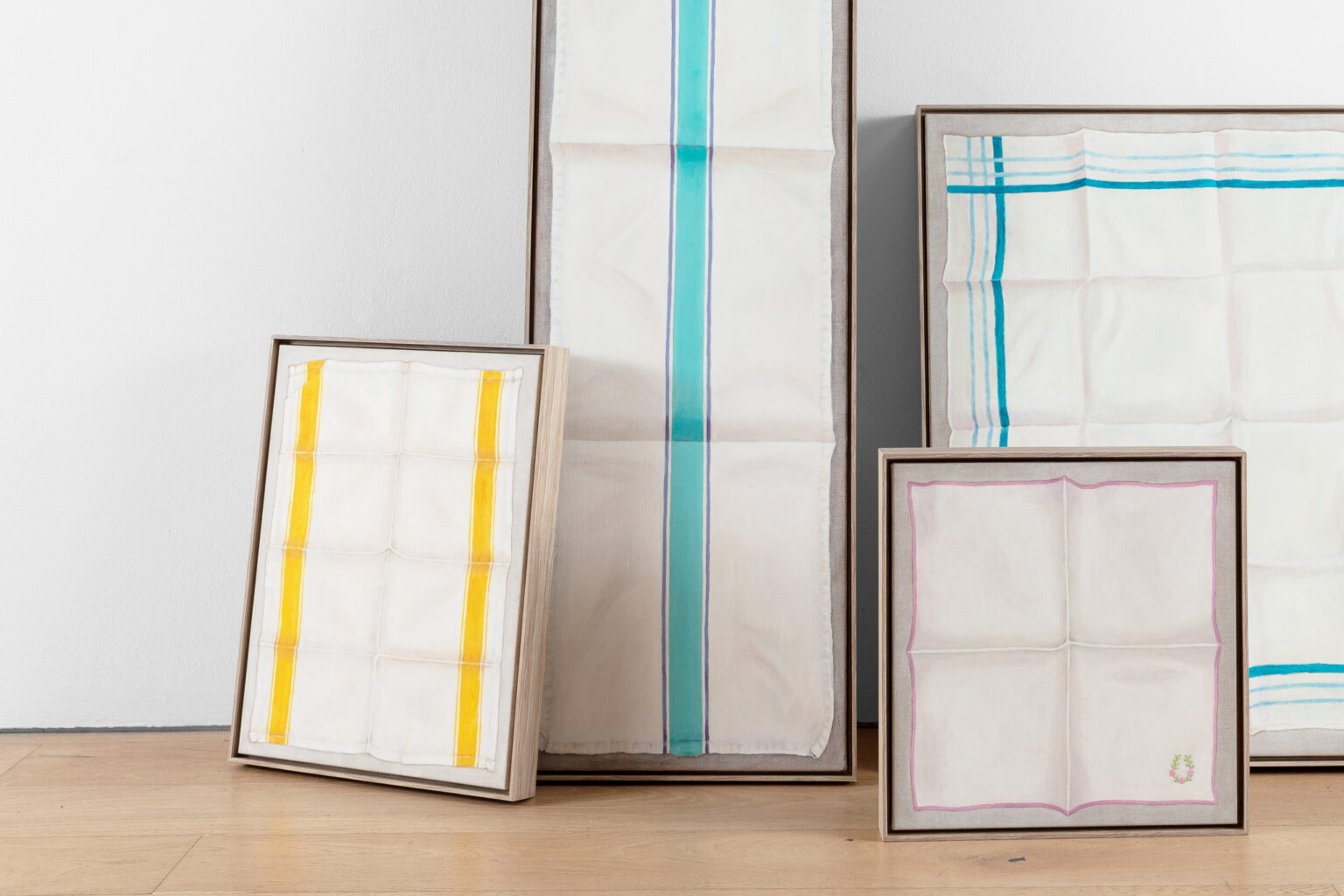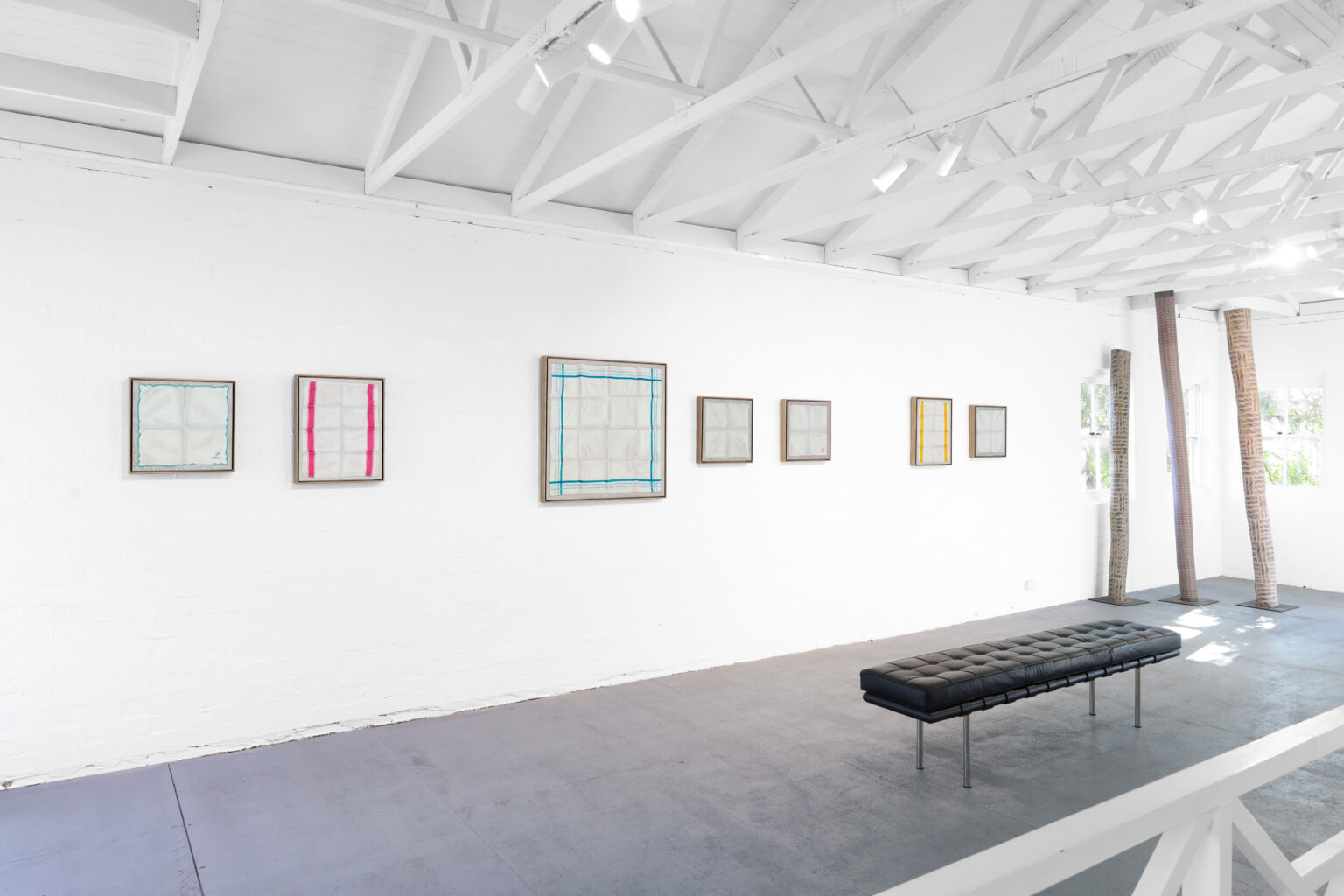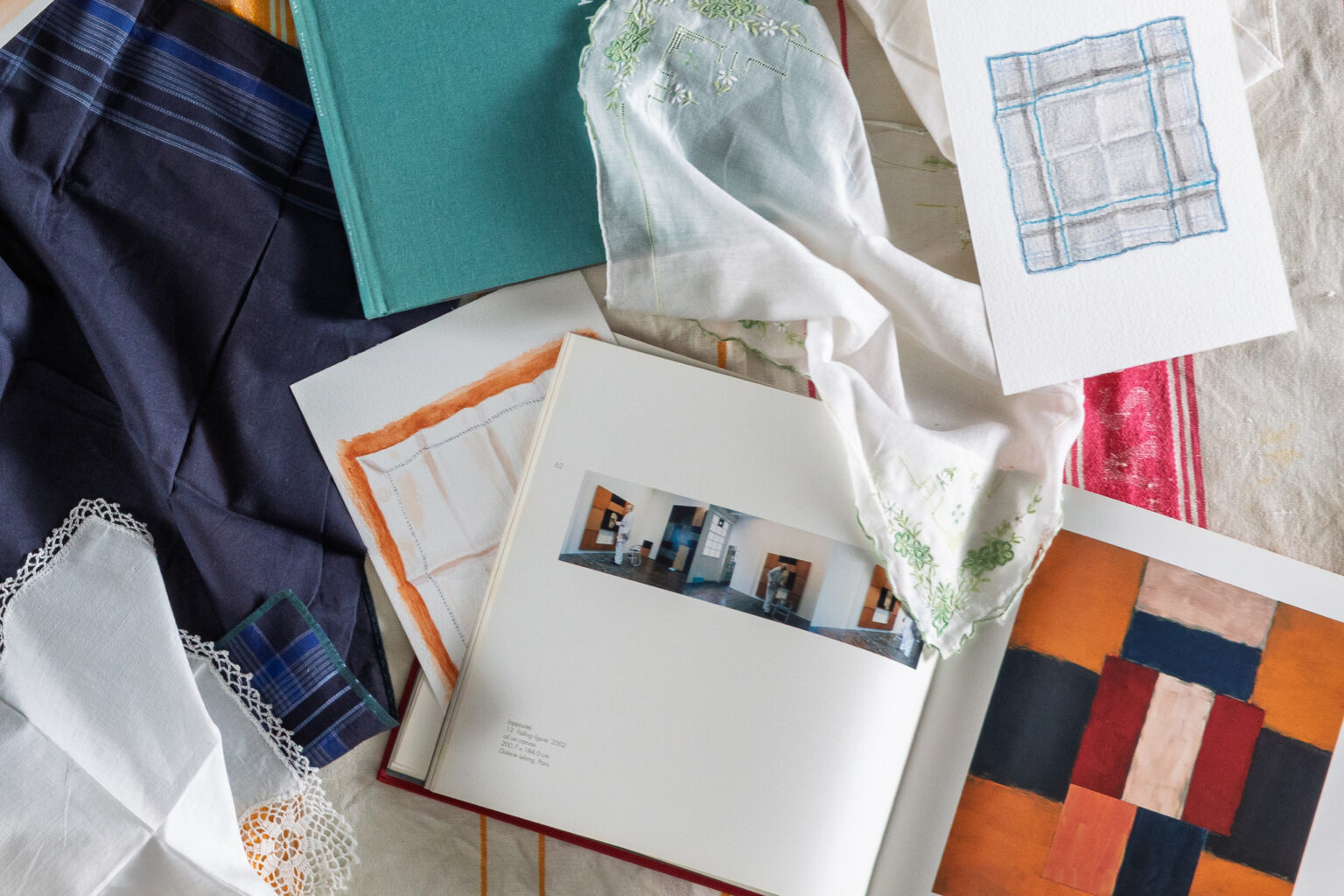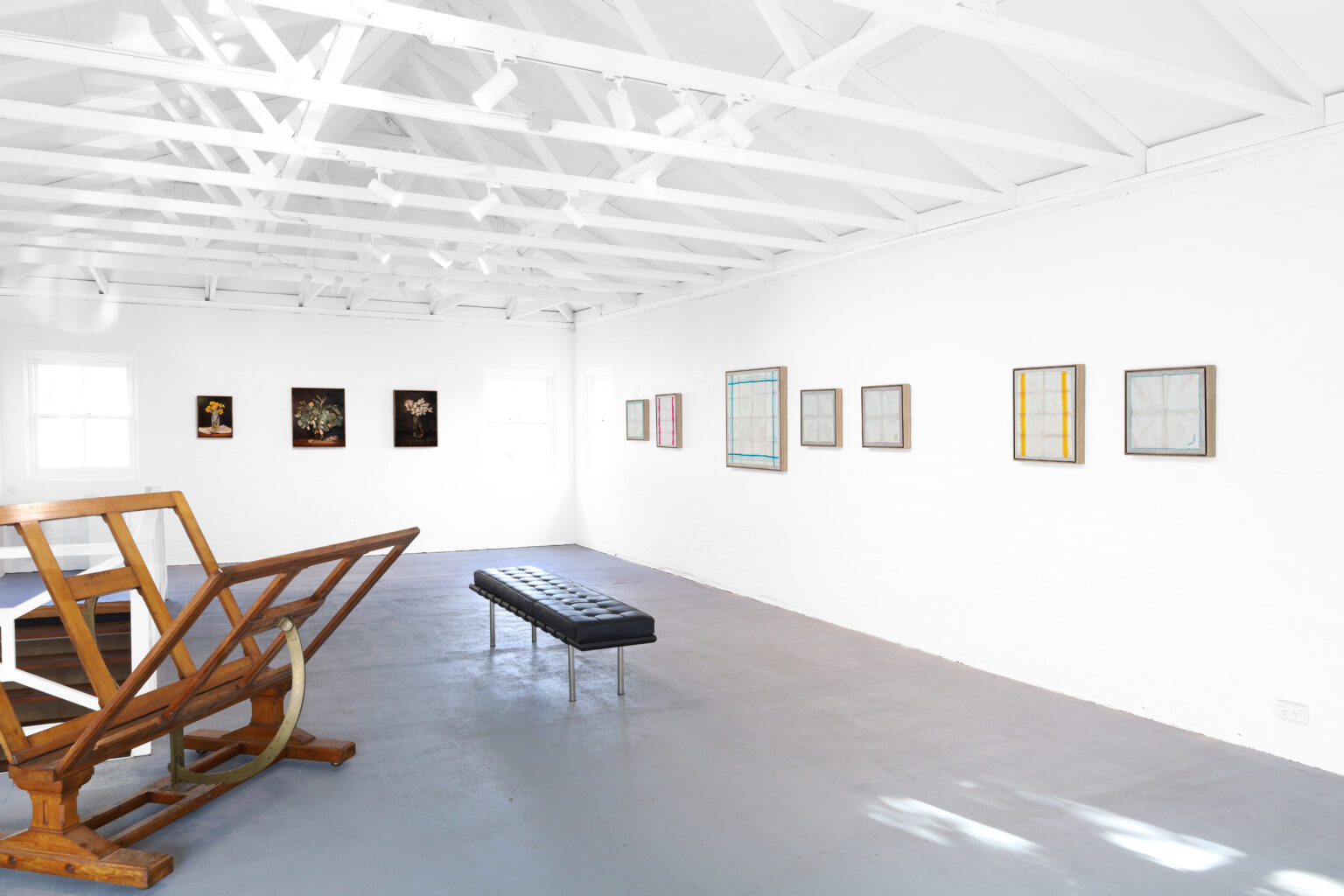Unfolded Linen on Linen II
- Mary Stack
- 4—24 Apr 2025
For Sydney-based painter Mary Stack, the domestic realm becomes a space for formal experimentation and quiet reflection. In Unfolded Linen on Linen II, she continues her investigation into the visual potential of the everyday—handkerchiefs, tea towels, the folds and creases of cloth. “Everyday items like handkerchiefs and tea towels felt like a familiar starting point,” she says. “By isolating these objects from their usual surroundings, my aim is to keep the interpretation open.” Though the subject matter may appear humble, Stack’s intellectual foundations are deeply rooted in art history.
A joint recipient of the 2023 Brandon Trakman Prize for Art History and Theory, she sees her practice as part of a broader, ongoing conversation. “While artists strive for original work, we cannot ignore that everything we make is part of a larger conversation.” Her influences are broad, ranging from the rigorous abstraction of Albers and Agnes Martin to the hushed, luminous order of Vermeer and de Hooch. “There’s something about the way they used light and shadow—it’s not just about realism. It’s about presence, and creating space for reflection.”

For Stack, it’s never just about the object depicted. “I am not painting these things because I have a particular interest in hankies, tea towels, or table runners,” she explains. “What appeals to me is the fact that when you unfold a folded piece of fabric, it reveals a grid pattern. Visually, I love a grid, but even more than that, I like an imperfect grid.” That imperfect grid—creased, crumpled, disrupted—becomes a quiet metaphor for human presence.
These marks suggest use, touch, interaction, but Stack resists any symbolic reading. “While philosophers have written extensively about folding as a way to understand the world, and psychologists view folding as a metaphor for concealment and unfolding as a metaphor for revelation… that is not what motivates me to paint this subject.” What drives her, instead, is the act of painting itself: how light behaves on cloth, how a flat plane of pigment can create the illusion of depth, and how the viewer negotiates between seeing an image and seeing a surface. “You might see the image of a tea towel,” she says, “but what you are actually seeing is just a layer of oil paint on a fabric surface.”


Stack’s process is as meticulous as it is intuitive. She begins by photographing the linen, then developing those images through drawings and watercolour studies before committing to the final painting. Each work is built up slowly in translucent layers of oil paint, with areas rubbed back to reveal texture and allow the image to emerge gradually. “There’s something poetic about painting linen on linen,” she reflects. “It becomes a kind of double surface.”
This material mirroring nods to the tradition of trompe l’oeil, but Stack enjoys subverting that genre by shifting scale and context. “Unlike traditional trompe l’oeil, which typically replicates objects at their actual size, I enjoy changing the scale—making something small feel monumental.” The result is a kind of visual play that draws attention to the act of perception itself, as much as to the object being represented. “It’s slow work,” she admits, “but that slowness matters.”


Among the works in this new series, Stack is particularly drawn to Untitled (unfolded hanky, white stripes) for its restraint. “It’s very minimal. There’s something quiet and contemplative about white on white that I find deeply satisfying.” She also cites Untitled (unfolded hanky, blue stripes), a larger-scale piece that presented the challenge of balancing overall structure with the delicacy of detail. “It’s a kind of dance, really, between the macro and the micro.”
Tea towels reappear throughout the body of work, familiar forms that she neither sentimentalizes nor seeks to elevate. “I’m not after nostalgia exactly, but I know that people project meaning onto these objects. That’s part of what makes them so interesting.” Of Untitled (unfolded tea towel, yellow stripes), she simply says, “The colour feels joyful. And sometimes, that’s enough of a reason.” While there’s no overt narrative threading the series together, there is a consistent undercurrent—a quiet attention to transformation. “These fabrics have been touched, folded, used. And now they’re painted, suspended. There’s something in that transformation that I keep coming back to.”








